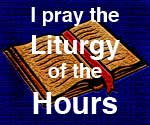I'm going to credit Robert Cabie (History of the Mass) for getting me thinking about this as well as my wife and her grandmother who asked me an excellent question. But, think about the story in Luke of the disciples on the road to Emmaus when they do not recognize the Lord but he talks with them. I believe these early Christians were trying to describe the order of the mass and the real presence of Christ through a real historical event (all the Gospels include accounts of their either not recognizing Christ or at least their doubt of his ressurection). These early Christians divided (like we do) the mass into two parts, Liturgy of the Word and Liturgy of the Eucharist. In the first part, the scriptures (Old Testament mostly at the time) were read to the congregation. Likewise in the first part of our Gospel here Christ expounds to them on the law and the prophets. The entire Old Testament points to Christ, but sometimes we do not recognize him in those readings. Likewise, they did not recognize Christ when he was teaching them Old Testament. We do get to directly experience him in the form of the Eucharist, however. He is fully present as both God and Man here. That's when we see the disciples "recognized him in the breaking of the bread". Behind the tabernacle in the Cathedral of St. Matthew in Washington D.C., there is a beautiful mural representing this occasion, where the disciples are adoring the host and it says "they recognized him in the breaking of bread" around it.



1 comment:
I saw that earlier! That's wonderful.
Post a Comment